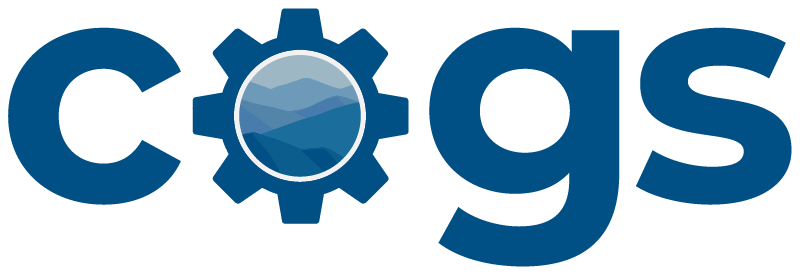Retention, Loyalty & Advocacy Automation: How to Keep Customers Coming Back
Retention, Loyalty & Advocacy Automation is transforming how businesses build meaningful, lasting customer relationships. By combining smart tools with proven strategies, brands can reduce customer churn with automation, increase customer lifetime value (CLV) automation, and even build customer advocacy automatically, without needing to scale up your team.
Attracting new customers is important, but keeping the ones you already have is where long-term growth really happens. Studies show that retaining a customer costs far less than acquiring a new one, and loyal customers not only buy more but also spread the word about your business. The challenge is that nurturing those relationships can take a lot of time and effort. That’s where automation steps in.
Whether you're looking to prevent customer churn automatically, re-engage inactive buyers, or run automated customer re-engagement campaigns, these systems are designed to support long-term success. From drip campaigns to loyalty automation for e-commerce, automation gives businesses the power to deliver faster service, more personalized communication, and cost-effective, scalable solutions.
Retention, loyalty, and advocacy automation help you provide great service, reward repeat customers, and encourage referrals, all without constant manual work. Whether you run a small shop, a seasonal business, or a large company, the right automations can keep your customers happy and turn them into your best advocates.
Why Automating Retention & Loyalty Matters
Customer loyalty doesn’t happen overnight. It’s built through consistent communication, helpful service, and thoughtful rewards. The problem? Manually tracking every interaction, coupon, or feedback form is nearly impossible at scale.
Automation solves this by:
Making service faster and more reliable.
Rewarding customers at the right times.
Collecting feedback without hassle.
Encouraging word-of-mouth through referrals and testimonials.
When your retention and loyalty processes run automatically, your team can focus on creating better experiences while the system handles routine follow-ups, surveys, and rewards.
1. Automated Customer Service
Providing quick, reliable support is the foundation of customer retention. Automation can help by routing inquiries to the right place, answering common questions instantly, or even providing 24/7 chat support.
Examples:
Chatbots that handle FAQs like store hours, return policies, or shipping updates.
Automated ticketing systems that tag and assign issues based on keywords.
Self-service knowledge bases that suggest articles when customers type in a question.
This doesn’t replace the human touch; instead, it frees your team from repetitive requests so they can focus on solving more complex problems. Customers get faster responses, which builds trust and satisfaction. By using tools like automated ticketing, chatbots, and self-service knowledge bases, companies not only improve efficiency but also create consistent, branded experiences that reinforce trust. For small businesses, this type of customer retention automation for small businesses is a game-changer, enabling quality support with fewer resources.
2. Handling Common Customer Inquiries Automatically
A large chunk of customer service requests are repetitive: “Where’s my order?” “How do I reset my password?” “What’s your refund policy?” Automation can take these off your plate.
For example:
E-commerce platforms like Shopify or WooCommerce can automatically send tracking numbers to customers after every order.
Automated email workflows can confirm refunds, exchanges, or appointment bookings.
SMS reminders can be triggered for service-based businesses (like appointment confirmations or reschedules).
By automating these common inquiries, you reduce wait times and prevent frustration, which directly supports long-term loyalty. These inquiry automation systems also provide scalability, allowing you to serve thousands of customers with the same consistency you'd offer one-on-one. It's a foundation that supports long-term growth and repeat business, especially when integrated into a wider workflow automation strategy.
3. Collecting User-Generated Content Automatically
Customers love to share their experiences, photos, reviews, and social posts. Automated systems can help you capture and use this content.
How it works:
After a purchase, send an automated request for a review or photo submission.
Use integrations with Instagram or TikTok to pull in tagged posts.
Display curated customer content on your website or in marketing emails automatically.
This not only saves time but also makes your marketing more authentic. Seeing real customers enjoying your products is powerful social proof that attracts new buyers and reinforces existing customers’ connection to your brand. Consider implementing User-Generated Content (UGC) Automation workflows that identify and share content automatically across social platforms. This type of authentic marketing / social proof can be more persuasive than traditional ads, as it taps directly into word-of-mouth marketing automation.
4. Testimonial & Review Automation
Testimonials are gold for building credibility. Automation ensures you collect them consistently instead of relying on one-off requests.
Ideas:
Send an automated email asking for a review 7 days after delivery.
Trigger a testimonial request after a successful project wrap-up.
Use survey tools that automatically turn positive responses into public reviews (with permission).
This creates a steady stream of testimonials you can showcase on your site, in ads, or on social media, reinforcing loyalty and building advocacy at the same time. Review automation not only helps collect feedback but also strengthens your brand’s credibility. You can pair this with testimonial automation to continuously highlight positive customer stories, converting satisfied users into visible brand advocates.
5. Automated Referral Tracking
Referrals are one of the most cost-effective ways to get new customers. Automated referral tracking makes it easy for happy customers to share your business and for you to reward them.
How it works:
Customers get a unique referral link generated automatically.
The system tracks clicks, sign-ups, and purchases tied to that link.
Rewards (like coupons or discounts) are issued automatically once a referral converts.
Instead of manually checking spreadsheets, everything is handled by the system. Customers feel valued for spreading the word, and you gain new business without heavy marketing spend. Referral tracking automation also ties directly into loyalty automation for e-commerce and advocacy automation for service-based businesses. These integrated systems amplify word-of-mouth while maintaining accurate records, reward distribution, and performance tracking.
6. Customer Feedback Workflows
Feedback is essential for improving products and services, but it can be hard to collect consistently. Automated feedback workflows solve this by sending requests at the right times.
Examples:
After a purchase, automatically send a “How was your experience?” email.
For service-based businesses, send a short survey after an appointment.
Trigger feedback forms when a customer cancels a subscription.
These responses can be automatically tagged and routed to the right team, so you don’t lose valuable insights. Acting quickly on feedback shows customers you care, which strengthens retention.
7. Customer Satisfaction Surveys
While feedback workflows capture open responses, satisfaction surveys (like Net Promoter Score or star ratings) provide measurable data over time. Automating them ensures you collect consistent metrics.
Benefits:
Monitor customer satisfaction year-round.
Identify trends (e.g., higher satisfaction during certain seasons).
Spot problems early if scores drop.
Automated surveys can be set to trigger after key milestones, like after a delivery, at the end of a season, or following customer support resolution.
8. Automated Loyalty Programs
Loyalty programs keep customers coming back by rewarding repeat purchases. Automation makes these programs seamless.
Features you can automate:
Points tracking: Every purchase automatically adds to a customer’s balance.
Reward notifications: When customers earn a reward, the system emails or texts them instantly.
Expiration reminders: If points are about to expire, customers get a nudge to redeem.
For example, a café could run an automated “Buy 10 drinks, get 1 free” program. The POS system tracks every purchase and automatically issues a coupon when the customer qualifies, no punch cards required. These automated loyalty programs for local businesses are especially powerful. Whether you run a neighborhood café or a regional chain, automating points tracking, reward fulfillment, and expiration notifications makes it easier to manage loyal customers at scale.
9. Coupon Automation
Discounts and coupons are great for re-engagement, but managing them manually can be chaotic. Automated coupon systems ensure the right offer goes to the right customer at the right time.
Examples:
Send a “We miss you” coupon to customers who haven’t purchased in 90 days.
Offer a birthday discount that triggers automatically based on the customer’s profile.
Send a seasonal coupon to past customers ahead of your busiest months.
Coupons feel more personal when they’re timely and relevant, and automation ensures they’re delivered consistently without staff involvement. Automated coupon automation tools can also be combined with personalized marketing efforts. For example, segmenting your audience and tying specific offers to purchase history or preferences enhances relevance, driving repeat purchases and customer satisfaction.
How Automation Supports Long-Term Growth
To truly unlock long-term growth, businesses must shift from one-time transactions to relationship-based marketing. This means using automation to not only serve customers but also nurture loyalty, foster advocacy, and increase customer lifetime value.
Key strategies include:
Automated customer re-engagement campaigns that win back dormant users.
Drip campaigns that nurture new customers toward repeat purchases.
Customer feedback workflows that identify areas of improvement quickly.
Automated loyalty programs that reward consistent behavior.
Key Takeaways
Retention, loyalty, and advocacy automation turn your best customers into repeat buyers and enthusiastic promoters of your brand. By automating customer service, inquiries, reviews, referrals, loyalty programs, and coupons, you build a system that keeps customers happy and engaged year-round.
The big wins:
Faster, more reliable service.
Consistent feedback collection.
Authentic content and testimonials on autopilot.
Rewards and coupons that drive repeat sales.
Easy tracking of referrals and loyalty points.
No matter the size of your business, these automations free up your time, improve the customer experience, and strengthen relationships that lead to long-term growth.
If you’re a growing brand aiming to scale without sacrificing service quality, adopting workflow automation tools can simplify complex processes and prevent customer churn automatically. From loyalty automation for e-commerce to advocacy automation for service-based businesses, there’s a solution tailored to your industry and goals.
Start small, maybe automate feedback surveys or set up an abandoned-cart coupon, then expand into loyalty programs and referrals. Over time, your customers will feel more connected, more valued, and more likely to spread the word about your business.

